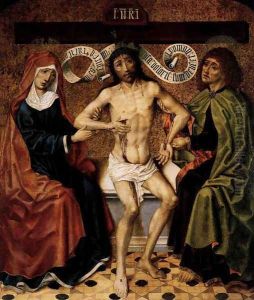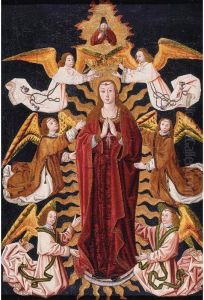Diego de la Cruz Paintings
Diego de la Cruz was a Spanish painter who was active during the late 15th century, specifically in the time period known as the Spanish Renaissance. Unfortunately, not much is known about his life, and his exact dates of birth and death are not firmly established. Scholars estimate that he was born around 1460 and died around 1500, based on the dates of his known works.
De la Cruz is primarily known for his religious paintings, which were executed in a style that combines Gothic and early Renaissance elements. This style is characterized by attention to detail, the use of rich colors, and a sense of depth and perspective that was becoming more prevalent in European art of the time. He was particularly skilled in the use of gold leaf, which he used to elaborate halos and other decorative elements in his paintings.
One of his most important works is the 'Burgos Altarpiece,' which is located in the Cartuja de Miraflores, a Carthusian monastery near Burgos, Spain. This piece showcases his talent in creating intricate religious scenes and his ability to imbue them with a sense of piety and devotion. Another significant work attributed to him is the 'Altarpiece of Saint Anne, the Virgin, and the Child,' which displays a similar stylistic approach.
Diego de la Cruz's work reflects the transitional nature of the period in which he lived, bridging the gap between the medieval and the modern as the Renaissance began to take hold in Spain. Though he may not have achieved the fame of some of his contemporaries, de la Cruz's contribution to Spanish painting and the development of Renaissance art in Spain is nonetheless significant. His works can be seen as an early expression of the themes and techniques that would come to dominate European art in the following centuries.

